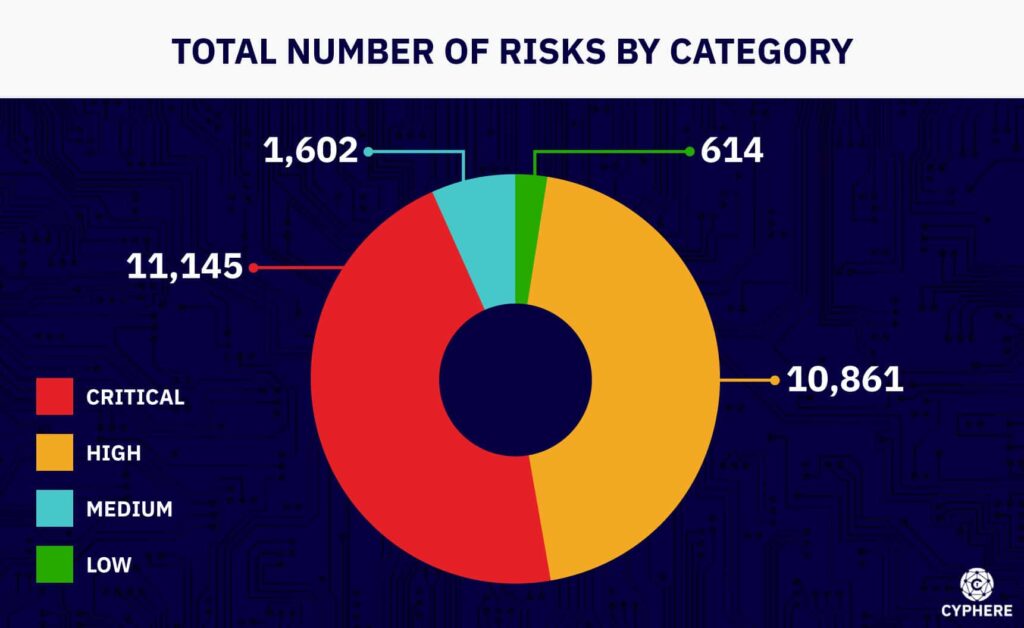
What is API Penetration Testing?
API penetration testing, or API pentesting, is a specialised form of security testing focused on identifying and addressing security vulnerabilities within an API (Application Programming Interface). APIs are the backbone of modern web applications, enabling communication between different software systems.
To ensure the API’s security posture is robust against real-world threats, this process simulates attacks to uncover potential weaknesses. These weaknesses include insecure authentication mechanisms, inadequate input validation, and misconfiguration.
This guide is part of our penetration testing guide.
Is API Pentesting Necessary?
Absolutely. In today’s interconnected world, APIs expose critical functionalities and sensitive data, making them prime targets for cyberattacks. Conducting API penetration testing is essential for several reasons:
Protection of Sensitive Data
APIs often handle sensitive information, including user credentials, payment data, and personal information. Ensuring these data are secure is paramount to prevent data breaches.
Regulatory Compliance
Many industries are subject to strict regulatory requirements that mandate regular security testing. API pentesting helps organisations meet these compliance standards.
Preventing Unauthorised Access
Weak authentication and authorisation mechanisms can allow attackers to gain unauthorised access, leading to significant security incidents.
Maintaining Trust
Ensuring the security of APIs helps maintain the trust of users and partners who rely on the secure data exchange.

Cyber attacks are not a matter of if, but when. Be prepared.
Box-ticking approach to penetration tests is long gone. We help you identify, analyse and remediate vulnerabilities so you don’t see the same pentest report next time.
API Penetration Testing Methodology
API penetration testing methods vary based on the API architecture (e.g., REST, GraphQL) and the underlying technology. Here are some standard techniques:
- Endpoint Discovery: Searching endpoints exposed by the API to map the attack surface.
- Input Validation Testing: Evaluating how the API handles user input, including testing for SQL injection, cross-site scripting (XSS), and command injection vulnerabilities.
- Authentication and Authorisation Testing: Assessing the robustness of authentication mechanisms and ensuring proper enforcement of user privileges.
- Session Management Testing: Ensuring session tokens are securely managed and resistant to hijacking.
- Business Logic Testing: Checking for API business logic flaws that could be exploited to bypass security controls.
- Cryptographic Testing: Verifying the strength of encryption security for data in transit and at rest.
- Configuration Testing: Identifying security misconfigurations that could expose the API to attacks.
API Penetration Testing Checklist to Follow
Here’s a step-by-step checklist to use while performing API penetration testing:
Gather Information
Collect API documentation, understand the intended functionality, and identify all endpoints.
Identify Endpoints
Discover all the endpoints the target APIs expose using tools like Postman or Burp Suite.
Test Authentication
Assess the authentication mechanism for vulnerabilities such as brute force, credential stuffing, and weak password policies.
Test Authorisation
Verify that proper access controls are in place and that users can only access resources they are authorised to use.
Check Input Validation
Test for input validation issues, including SQL injection, XSS, and command injection.
Session Management
Evaluate how session tokens are generated, stored, and invalidated to prevent hijacking.
Business Logic Testing
Ensure the API’s business logic cannot be bypassed or abused.
Error Handling
Check how errors are handled and whether debug mode or verbose error messages are exposed.
Encryption Checks
Ensure data is encrypted in transit and at rest using robust encryption algorithms.
Configuration Review
Assess the API’s configuration for security misconfigurations.
Report Findings
Document all identified vulnerabilities and provide mitigation suggestions.
💡Suggested Read: How to Write a Penetration Testing Report?
Who Should Be Aware of API Security?
API security should be a priority for various stakeholders within an organisation:
- Developers: To build secure APIs and understand potential vulnerabilities.
- Security Teams: To conduct thorough security testing and mitigate identified vulnerabilities.
- IT Management: To ensure security measures align with organisational policies and regulatory requirements.
- Business Leaders: To understand the potential risks and impacts of security breaches on the organisation.
- End-Users: To be aware of how their data is protected and to maintain trust in the application.
Security Risks Associated with APIs
There are various common API vulnerabilities, including:
- Data Breaches: Unauthorised access to sensitive data can lead to significant financial and reputational damage.
- Injection Attacks: SQL injection, command injection, and other input-based attacks can compromise the API and its data.
- Authentication Flaws: Weak authentication mechanisms can be exploited to access unauthorised resources.
- Authorisation Issues: Improper access controls can allow privilege escalation and unauthorised access to resources.
- Inadequate Input Validation: Poor input validation can lead to XSS, path traversal, and other vulnerabilities.
- Security Misconfigurations: Misconfigured API endpoints can expose the application to attacks.
How Long Would API Penetration Take?
The duration of an API penetration testing process depends on several factors:
- Scope of Testing: The number of endpoints and the complexity of the API.
- Depth of Testing: The thoroughness of the testing, including both automated tools and manual testing methods.
- Availability of Documentation: Comprehensive documentation can expedite the testing process.
- Test Environment: Whether testing is conducted in a production or staging environment.
On average, a detailed API penetration test can take anywhere from a few days to several weeks, depending on these factors.
Things to Note Before Opting for API Pentest
Before conducting API penetration testing, consider the following:
- Define the Scope: Clearly outline which APIs and endpoints need testing.
- Prepare Documentation: Ensure API documentation is available and up-to-date to assist the testing process.
- Set Up a Test Environment: Create a safe environment that mirrors production for testing.
- Compliance Requirements: Consider any regulatory requirements that must be met.
- Choose the Right Tools: Use automated tools and manual testing methods for a comprehensive assessment.
In Q1 2024, a GitHub token leaked by a Mercedes-Benz employee provided access to all the source code stored on the carmaker’s GitHub Enterprise server. This leaked token could access the relevant Github server, allowing access to and download capabilities for the source code. This demonstrates the seriousness of API security with independent validation to ensure good practices are followed.
💡Suggested Read: Learn about cyber security vulnerabilities and their effects on businesses here on penetration testing statistics.
Cost Associated with API Pen Testing
The cost of API penetration tests can vary based on several factors:
- Scope and Complexity: Larger, more complex APIs require more resources and time.
- Depth of Testing: More thorough testing incurs higher costs due to the increased time and expertise required.
- Testing Frequency: Regular testing can influence the overall cost, with some providers offering discounted rates for ongoing assessments.
- Expertise Required: The penetration testers’ knowledge level can impact the cost.
💡Typically, costs can range from a few thousand to tens of thousands of dollars, depending on these factors.
Automated or Manual API Penetration Testing?
Both automated and manual testing have their advantages and should be combined for a comprehensive assessment:
- Automated Testing: Useful for quickly identifying common vulnerabilities and performing repetitive tasks. Computerised tools like OWASP ZAP and Burp Suite can efficiently scan for known security issues and are cost-effective.
- Manual Testing: Essential for uncovering complex vulnerabilities that automated tools might miss. Skilled testers can perform in-depth analysis, explore business logic flaws, and identify gaps in cyber security controls.
Combining both methods ensures a thorough evaluation of the API security posture.
💡Suggested Read: API Penetration Testing Tools
When Should API Penetration Test Be Carried Out?
API penetration testing should be conducted:
- During Development: Early in the development cycle, catch vulnerabilities before they become embedded in the final product.
- Before Deployment: To ensure the API is secure before it goes live and exposes data to end-users.
- Regularly: Periodic testing to address new vulnerabilities as the API evolves and new threats emerge.
- After Major Changes: Whenever significant updates or changes are made to the API, such as adding new features or endpoints.
How to Prevent API Security Breaches?
Preventing API security breaches involves implementing robust security measures and best practices, including:
Implementing Strong Authentication
Use robust authentication mechanisms and enforce multi-factor authentication to protect user accounts.
Validating Input
Ensure all user input is validated and sanitised to prevent injection attacks.
Enforcing Access Controls
Properly configure and enforce access controls to prevent unauthorised access and privilege escalation. Ensure there is no security misconfiguration.
Using Encryption
Encrypt data in transit and at rest using robust encryption algorithms to protect sensitive information.
Regular API Security Testing
Conduct regular security audits and penetration tests to identify and address potential vulnerabilities.
Keeping Software Updated
Regularly update API components and libraries to patch known vulnerabilities and stay ahead of emerging threats.
Monitoring and Logging
Implement logging and monitoring to detect and respond to suspicious activities in real time.
How Cyphere Can Help?
Cyphere specialises in comprehensive API penetration testing services. Our team of experts employs both automated tools and manual techniques to assess your API’s security posture thoroughly. We identify vulnerabilities, provide detailed reports with remediation suggestions, and help you strengthen your API against potential threats.
🤙 Let’s discuss how we can improve your security posture.
Conclusion
API penetration testing is crucial to maintaining robust cybersecurity for any organisation relying on APIs. By following best practices and leveraging expert services like Cyphere, you can safeguard your APIs against an ever-evolving landscape of security threats. Regular testing and robust security measures will help maintain the trust of users and partners who depend on secure data exchange through your APIs.
💡Related Reads
















